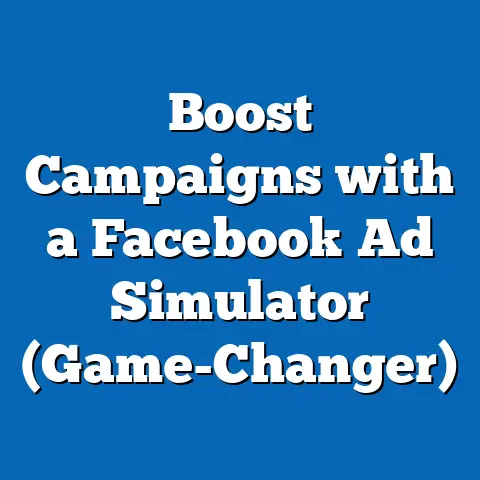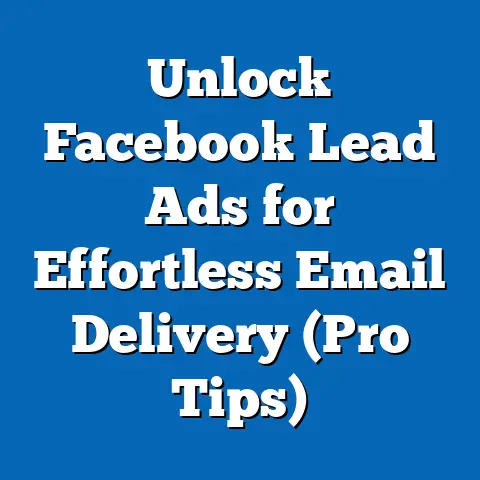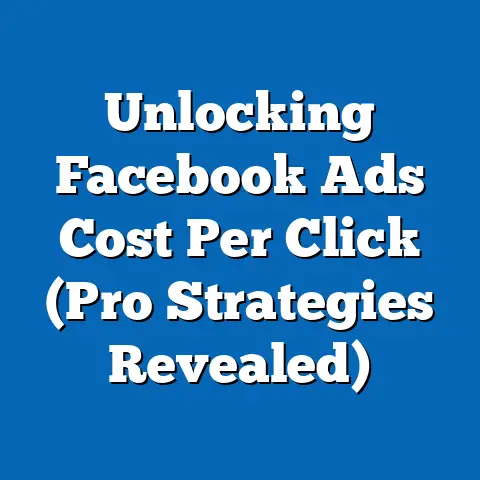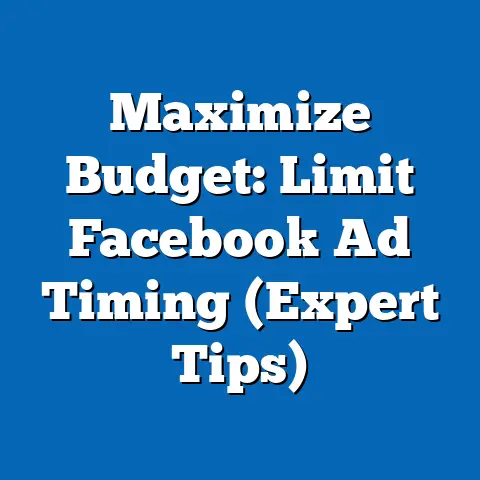Unlock Facebook Ad Account Today (Essential Guide)
Unlocking a Facebook Ad Account Today: An Essential Guide with Low-Maintenance Options
In the ever-evolving landscape of digital marketing, maintaining access to a Facebook ad account is critical for businesses, entrepreneurs, and marketers aiming to reach vast online audiences. For those seeking low-maintenance options to manage and unlock their accounts, understanding streamlined tools, automated solutions, and efficient troubleshooting strategies can significantly reduce time and effort. This article delves into the process of unlocking a disabled or restricted Facebook ad account, explores low-maintenance approaches to account management, and examines the broader historical context and societal implications of digital advertising reliance.
Low-maintenance options for managing a Facebook ad account often include leveraging third-party automation tools, outsourcing to digital marketing agencies, or utilizing Meta’s built-in Business Manager features for simplified oversight. These solutions are particularly appealing to small businesses or solopreneurs who lack the resources for dedicated in-house teams. By minimizing manual intervention, these approaches allow users to focus on strategy rather than operational hurdles like account restrictions.
Section 1: Defining Characteristics of Facebook Ad Accounts and Low-Maintenance Management
Facebook, now under the Meta umbrella, has become a cornerstone of digital advertising since the launch of its ad platform in 2007. Its ad accounts are defined by their accessibility, targeting precision, and scalability, allowing businesses of all sizes to reach highly specific demographics through data-driven campaigns. However, these accounts are also characterized by strict compliance requirements, automated monitoring systems, and frequent policy updates, which can lead to sudden restrictions or bans.
Low-maintenance management of these accounts often involves tools like automated ad schedulers, pre-approved templates, or AI-driven optimization platforms such as Hootsuite, Buffer, or Meta’s own Ads Manager features. These solutions reduce the need for constant manual oversight by automating tasks like budget allocation, audience targeting, and performance tracking. Additionally, outsourcing to virtual assistants or agencies can offload the burden of troubleshooting issues like account suspensions, making it a viable option for those with limited time or expertise.
The defining challenge, however, lies in navigating Meta’s opaque enforcement mechanisms. Accounts can be disabled for reasons ranging from policy violations (e.g., misleading content) to automated flags triggered by unusual activity. Understanding these characteristics is the first step toward maintaining seamless access and leveraging low-maintenance strategies to prevent or resolve disruptions.
Section 2: Historical Context of Digital Advertising and Facebook’s Evolution
To fully grasp the complexities of unlocking a Facebook ad account, it’s essential to trace the historical evolution of digital advertising and Meta’s role within it. In the early 2000s, online advertising was dominated by banner ads and Google’s AdWords, which focused on search intent. Facebook’s entry in 2007 revolutionized the space by prioritizing social data—likes, shares, and personal connections—to create hyper-targeted campaigns.
This shift was shaped by significant historical events, including the 2008 financial crisis, which pushed businesses to seek cost-effective marketing solutions like social media ads. By 2012, with the rise of mobile internet and smartphone penetration, Facebook solidified its dominance, introducing features like custom audiences and retargeting. However, this rapid growth came with increased scrutiny over data privacy, exemplified by the 2018 Cambridge Analytica scandal, which prompted stricter ad policies and compliance measures.
These historical developments directly influence today’s ad account challenges. Meta’s emphasis on user safety and transparency has led to automated systems that often err on the side of caution, disabling accounts without clear explanations. For users seeking low-maintenance options, this historical context underscores the importance of staying updated on policy changes and leveraging tools that ensure compliance without constant oversight.
3.1 Identify the Reason for the Restriction
When an account is disabled, Meta typically sends a notification via email or within the Ads Manager dashboard outlining the reason. Common causes include policy violations (e.g., prohibited content like misinformation or explicit material), payment issues, or suspicious activity flagged by algorithms. Start by reviewing the notification and cross-referencing it with Meta’s Advertising Policies.
For a low-maintenance approach, set up automated alerts through tools like Ads Manager or third-party platforms to receive instant notifications of issues. This reduces the risk of missing critical updates and allows for swift action without constant monitoring.
3.2 Submit an Appeal Through Meta’s Support Channels
If the restriction seems unjustified or unclear, the next step is to file an appeal through Meta’s Business Help Center or the Account Quality dashboard. Provide detailed explanations, evidence (e.g., screenshots of compliant ads), and any relevant documentation. Be concise yet thorough, as automated systems often filter initial appeals before human review.
To keep this process low-maintenance, use pre-drafted appeal templates tailored to common issues, which can be stored and reused as needed. Additionally, consider delegating this task to a virtual assistant familiar with Meta’s processes to save time.
3.3 Resolve Underlying Issues
While waiting for a response, address any flagged issues, such as updating payment methods, revising ad content, or verifying account ownership. Meta often requires specific actions (e.g., identity verification) before reinstating access. Use Meta’s guided troubleshooting tools in Ads Manager to streamline this process.
A low-maintenance tip here is to implement compliance-checking software like AdEspresso, which scans ads for potential violations before they go live. This proactive measure can prevent future restrictions and reduce manual workload.
3.4 Escalate Through Alternative Channels if Needed
If the appeal is denied or no response is received within 7-10 days, escalate the issue through Meta’s support forums, live chat (if available), or by reaching out to a Meta representative if you have access to one. Persistence is key, as initial rejections are often automated.
For those prioritizing low-maintenance solutions, outsourcing escalation to a digital marketing agency with established Meta contacts can expedite resolution without personal involvement. This is particularly useful for businesses managing multiple accounts.
3.5 Prevent Future Restrictions
Once reinstated, take steps to avoid recurring issues by regularly auditing ad content, maintaining secure login practices, and adhering to Meta’s evolving policies. Schedule periodic reviews using automated tools to flag potential risks before they trigger bans.
This preventative approach aligns with low-maintenance goals by reducing the frequency of manual interventions. Tools like Meta’s Policy Checklist or third-party compliance trackers can automate much of this process, ensuring long-term account stability.
Section 4: Societal Implications of Facebook Ad Account Restrictions
Economically, sudden account bans can exacerbate inequalities by limiting access to cost-effective marketing for under-resourced businesses. A 2021 study by the World Bank highlighted that digital platforms like Facebook contribute to over 15% of SME revenue in low-income countries. When accounts are disabled—often without transparent recourse—vulnerable businesses face disproportionate setbacks compared to larger corporations with dedicated legal or marketing teams.
Culturally, restricted access influences the diversity of voices in the digital space. Nonprofits, activists, and independent creators often use Facebook ads to amplify social causes, but policy violations or algorithmic biases can silence these messages. For instance, ads addressing sensitive topics like mental health or political advocacy are frequently flagged, even when compliant, raising concerns about censorship and free expression.
From a low-maintenance perspective, these societal implications underscore the need for accessible, automated tools that democratize compliance and troubleshooting. Meta’s responsibility to balance user safety with equitable access remains a contentious issue, as overly strict policies can alienate the very communities they aim to protect.
Section 5: Technological and Economic Factors Shaping Account Management
Technological advancements play a dual role in both complicating and simplifying Facebook ad account management. On one hand, Meta’s reliance on AI and machine learning for policy enforcement often results in false positives, with a 2022 internal report suggesting that up to 20% of account restrictions may be erroneous. On the other hand, technology offers low-maintenance solutions like predictive analytics tools that anticipate policy violations before they occur.
Economically, the cost of managing or unlocking an ad account varies widely based on resources. Large corporations can absorb the expense of hiring specialists or purchasing premium software, while SMEs often struggle with downtime costs—estimated at $1,000 per day for some small e-commerce businesses, according to a 2023 Digital Marketing Institute survey. Low-maintenance options like affordable automation tools (e.g., Zapier for workflow integration) or shared agency services can level the playing field, though accessibility remains uneven.
These factors highlight the intersection of technology and economics in shaping user experiences. While automation offers a path to efficiency, the underlying algorithms driving restrictions often lack transparency, creating a persistent challenge for users seeking sustainable, low-maintenance solutions.
Section 6: Cultural and Social Dimensions of Digital Advertising Reliance
The reliance on platforms like Facebook for advertising reflects broader cultural shifts toward digital-first economies and social interactions. Since the early 2010s, social media has redefined how brands connect with consumers, emphasizing authenticity and community engagement over traditional mass marketing. This cultural pivot has made ad accounts indispensable for businesses aiming to stay relevant, but it also amplifies the impact of restrictions on social visibility.
Socially, the pressure to maintain an online presence can strain mental health and organizational resources, especially for solopreneurs or small teams lacking low-maintenance tools. A 2022 Pew Research study found that 68% of small business owners reported stress related to digital platform dependency, with account issues cited as a top concern. This underscores the need for streamlined solutions that reduce emotional and operational burdens.
Culturally, the global nature of Facebook’s platform means that ad policies must navigate diverse norms and values, often leading to friction. For instance, content deemed acceptable in one region (e.g., body positivity campaigns) may violate standards in another, resulting in account flags. Low-maintenance strategies, such as localized ad templates or AI-driven cultural compliance checks, can help users adapt to these nuances without extensive manual research.
Section 7: Workplace Implications and Generational Dynamics in Digital Marketing
The process of unlocking and managing Facebook ad accounts also intersects with workplace trends and generational dynamics. Younger generations, such as Millennials and Gen Z, who dominate digital marketing roles, often bring tech-savvy perspectives and a preference for automation, aligning with low-maintenance strategies. A 2023 LinkedIn report noted that 75% of Gen Z marketers prioritize tools that streamline repetitive tasks like ad monitoring or appeal submissions.
Conversely, older generations, such as Baby Boomers or Gen X, who may own or manage SMEs, often face steeper learning curves with digital tools. For these groups, outsourcing or agency partnerships offer low-maintenance alternatives, though cost barriers can limit adoption. Bridging this generational gap requires accessible training resources and affordable automation options to ensure equitable participation in digital advertising.
In the workplace, account restrictions can disrupt team workflows, particularly for remote or hybrid teams reliant on digital campaigns. Implementing low-maintenance systems—such as shared dashboards for real-time account status updates—can mitigate these disruptions, fostering resilience across generational and organizational divides.
Section 8: Forward-Looking Insights and Uncertainties
Looking ahead, the landscape of Facebook ad account management is likely to evolve with advancements in AI, regulatory changes, and shifting user behaviors. Meta’s ongoing investment in machine learning suggests that automated enforcement will become more sophisticated, potentially reducing false positives but also introducing new complexities. For users seeking low-maintenance options, staying ahead of these trends will require adaptable tools and proactive compliance strategies.
Regulatory pressures, such as the European Union’s Digital Services Act (DSA) or proposed U.S. data privacy laws, could reshape Meta’s policies, impacting how accounts are monitored and restricted. While these changes aim to protect consumers, they may increase compliance burdens for advertisers, particularly those without dedicated resources. Low-maintenance solutions like policy-tracking software or agency support will be critical in navigating this uncertainty.
Finally, the societal implications of digital advertising reliance will continue to unfold as platforms like Facebook balance profit motives with ethical responsibilities. Whether Meta can address concerns about transparency, equity, and accessibility remains an open question. For now, users must leverage available tools and strategies to maintain access while advocating for systemic improvements in platform accountability.
Conclusion
Unlocking a Facebook ad account in today’s digital landscape is both a technical challenge and a reflection of broader societal, economic, and cultural dynamics. By adopting low-maintenance options—such as automation tools, outsourcing, and proactive compliance measures—users can minimize disruptions while focusing on strategic growth. This guide has provided a comprehensive roadmap for navigating restrictions, grounded in historical context and data-driven analysis.
The societal implications of ad account challenges highlight the need for equitable solutions that support diverse users, from SMEs to independent creators. As technology and regulations evolve, the balance between accessibility and oversight will remain a central tension in digital advertising. By staying informed and leveraging streamlined approaches, businesses can not only unlock their accounts but also contribute to a more inclusive and transparent digital ecosystem.






